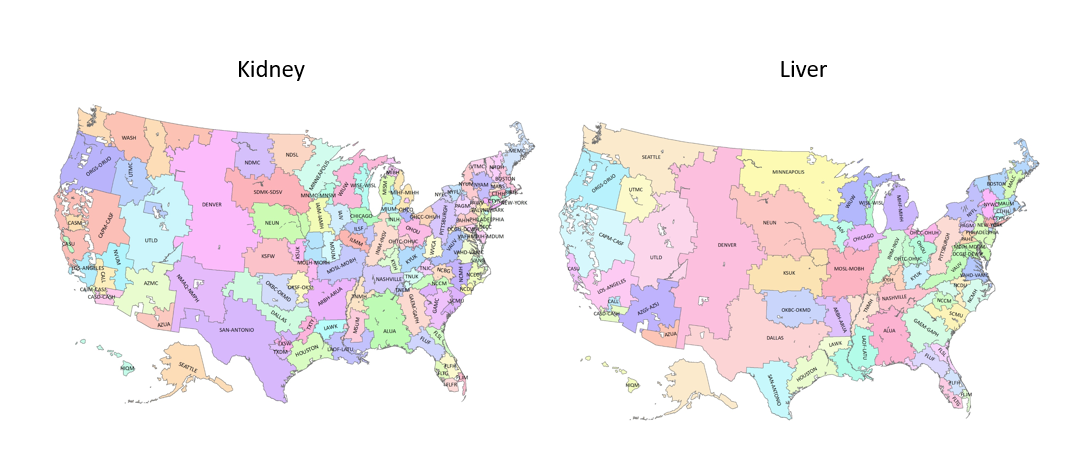Creating Geographic Catchment Areas for Solid Organ Transplant Centers
1Emory University, Emory Transplant Center, Georgetown, TX, 2Emory University, Emory Transplant Center, Georgetown, GA, 3Dept of Surgery, University of Iowa, Iowa City, IA
Meeting: 2019 American Transplant Congress
Abstract number: 353
Keywords: Methodology, Public policy
Session Information
Session Name: Concurrent Session: Non-Organ Specific: Public Policy & Allocation
Session Type: Concurrent Session
Date: Monday, June 3, 2019
Session Time: 4:30pm-6:00pm
 Presentation Time: 4:54pm-5:06pm
Presentation Time: 4:54pm-5:06pm
Location: Room 311
*Purpose: While measurement of transplant center performance has traditionally begun at listing, there is a significant population of potential candidates who may benefit from transplant but lack access. Understanding how well transplant centers serve this population requires a system to attribute candidates to the transplant program. Geographic catchment areas may be appropriate population-based denominators to assess transplant center metrics. We updated transplant referral regions (TRRs) for kidney, liver, pancreas, heart and lung transplants based on prevailing care delivery patterns.
*Methods: Data sources included the Scientific Registry of Transplant Recipients (SRTR) and the Dartmouth Atlas. To define TRRs, we used patient permanent zip codes to identify their hospital referral region (HRR). We assigned HRRs to the center at which the plurality of resident candidates from 2006 -16 were waitlisted. Centers located within 10 miles were clustered. TRRs were described using data from the 2010 U.S. Census.
*Results: We defined 110 unique TRRs for kidney, 65 for liver (Figure 1), 86 for pancreas, 67 for heart, and 42 for lung. Approximately three out of four patients for each solid organ type were listed in the TRR of their permanent zip code (kidney: 71.4%, liver: 73.5%, pancreas: 71.5%, heart: 73.1%, lung: 70.8%). The mean area, population size, and demographics of the TRRs varied markedly (Table 1).
*Conclusions: Transplant referral regions (TRR) represent geographic catchment areas for solid organ transplant centers, can be accurately identified and vary substantially in terms of size, population, and composition. Future research in this area will examine variation in disease burden, access to the waiting list, and outcomes by TRR in order to inform center-level quality metrics.
To cite this abstract in AMA style:
Ross K, Patzer R, Axelrod D. Creating Geographic Catchment Areas for Solid Organ Transplant Centers [abstract]. Am J Transplant. 2019; 19 (suppl 3). https://atcmeetingabstracts.com/abstract/creating-geographic-catchment-areas-for-solid-organ-transplant-centers/. Accessed January 5, 2026.« Back to 2019 American Transplant Congress


